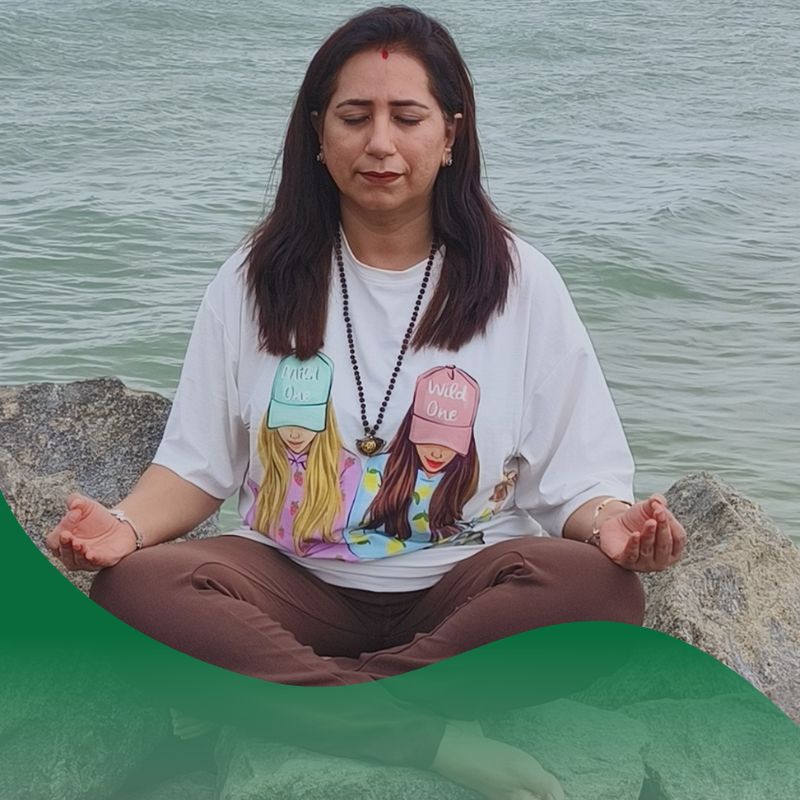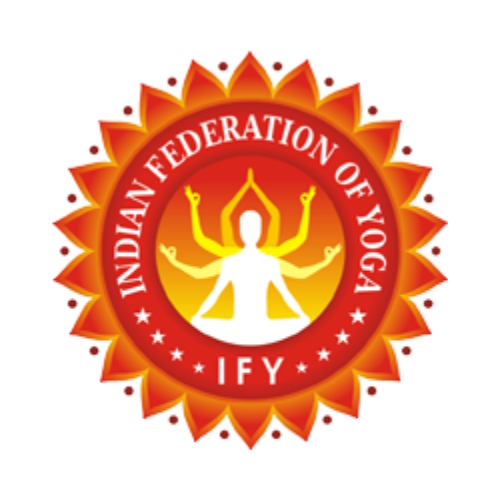
Neeru Batra
Indian Federation of Yoga (Founder)
- + (91) 9999 135 155
- ify.directors@gmail.com
300-Hour Yoga Teacher Training
(Indian Federation of Yoga)
Overview
The 300-hour Yoga Teacher Training by the Indian Federation of Yoga is an advanced, professionally structured program that upgrades a 200-hour–trained teacher into a confident, skilled, and well-rounded instructor. You’ll deepen mastery in asana, pranayama, meditation, yoga anatomy, yoga philosophy, sequencing, hands-on adjustments, cueing, yoga therapy fundamentals, and professional ethics—with extensive practicum and personalized mentorship.
Who This Course Is For (Prerequisites)
- Holders of a 200-hour certificate ready to advance their teaching.
- Active practitioners seeking advanced yoga training in Hatha and Ashtanga methods.
- Teachers who want stronger skills in alignment, assisting, sequencing, injury-sensitive teaching, and class management.
Duration & Formats
- Total Hours: 300 contact + non-contact hours.
- Formats: Intensive (4–6 weeks), Weekend/Modular (8–16 weeks), or Blended (in-person + online components).
- Assessment: Written exam, practical teaching demo, continuous assessment, and a capstone project.
Hour Allocation (Guided Framework)
- Techniques, Training & Practice (TTP): ~140 hours (advanced asana, pranayama, meditation, kriya, mantra).
- Anatomy & Biomechanics: ~50 hours (applied movement science, injury-aware teaching).
- Yoga Humanities: ~40 hours (philosophy, ethics, lifestyle).
- Professional Essentials: ~50 hours (sequencing, cueing, assists, theming, class design, business basics).
- Practicum & Mentorship: ~20 hours (assist/observe/teach with feedback).
(Hours are indicative; the Indian Federation of Yoga provides the exact schedule for each batch.)
Step-by-Step Course Journey
Step 1: Enquiry & Counseling
You connect with the Indian Federation of Yoga team to discuss goals, schedule, and the best format. You receive the syllabus, calendar, and enrollment checklist.
Step 2: Application & Admission
Submit the application, 200-hour certificate, ID proof, and a brief teaching/practice statement. Upon acceptance, you receive your welcome kit and reading list.
Step 3: Pre-Course Orientation (Online)
An onboarding session explains expectations, evaluation methods, code of conduct, attendance policy, and learning resources. You’ll get access to the student portal.
Step 4: Pre-Reading & Baseline Practice
Begin a foundation review: core alignment, breath awareness, preparatory pranayama, and meditation basics. Submit a short reflective journal before Day 1.
Step 5: Daily Structure (Sample Intensive Timetable)
- 06:00–08:00: Morning sadhana — advanced asana + pranayama
- 08:00–09:00: Breakfast & self-reflection
- 09:00–10:30: Yoga anatomy & biomechanics
- 10:45–12:15: Philosophy, ethics, chanting
- 12:15–13:30: Lunch
- 13:30–15:00: Teaching methodology & sequencing
- 15:15–16:45: Hands-on assists, cueing labs
- 17:00–18:00: Meditation / Yoga Nidra / restorative
- 18:00–19:00: Assignments, mentoring, or peer practice
(Weekend/Modular format distributes the same hours across scheduled sessions.)
Step 6: Advanced Asana & Alignment Labs
Refine standing, balancing, hip-openers, backbends, twists, inversions, and arm balances with intelligent progressions. Learn prop usage, regressions/progressions, and injury-sensitive variations aligned to individual bodies.
Step 7: Ashtanga & Hatha Intensives
Deepen Hatha principles (stability, alignment, breath) and structured Ashtanga methodology (vinyasa, bandhas, drishti). Build stamina and precision, and learn how to safely introduce advanced postures.
Step 8: Pranayama, Kriya & Breath Science
Systematic progression through nadi shodhana, ujjayi, bhramari, kapalabhati, bhastrika, and preparatory ratios. Learn contraindications, therapeutic applications, and how to teach breathwork responsibly.
Step 9: Meditation, Mantra & Mindfulness
Develop a toolkit of practices: breath-led meditation, mantra japa, trataka, yoga nidra, loving-kindness, body-scan. Learn how to structure short and long meditations, hold silence, and guide beginners safely.
Step 10: Anatomy & Biomechanics (Applied)
Map joints, muscles, fascia, breath mechanics, nervous system regulation. Understand load management, spinal health, shoulder/hip mechanics, and common conditions (e.g., tight hamstrings, weak glutes, wrist sensitivity). Apply evidence-informed cues.
Step 11: Yoga Philosophy & Ethics
Study Patanjali’s Yoga Sutra themes (practice, obstacles, abhyasa/vairagya), yamas & niyamas in modern teaching, and the teacher’s ethics, scope of practice, consent, inclusivity, and cultural sensitivity. Explore how to weave philosophy into class themes.
Step 12: Sequencing Mastery
Design peak-pose sequences, therapeutic flows, Hatha ladders, balanced vinyasa arcs, and restorative templates. Learn class objectives, warm-up logic, counterposes, transitions, and timing. Create multi-level plans with modifications.
Step 13: Cueing, Voice, and Class Presence
Refine clear, concise, and layered cues (breath → alignment → action → refinement). Train tempo, tone, and language choice. Practice demo vs. verbal-only classes and mirror vs. directional cueing.
Step 14: Hands-On Assists & Prop-Based Support
Learn consent-driven touch, safety, and stability-first adjustments. Use blocks, straps, bolsters, chairs, walls to meet bodies where they are—enhancing access and agency.
Step 15: Inclusivity & Special Populations
Design classes for beginners, seniors, prenatal/postnatal practitioners, larger bodies, athletes, and desk-bound professionals. Build chair yoga, gentle flows, and injury-aware sequences. Understand contraindications and referral points.
Step 16: Yoga Therapy Fundamentals (Foundational)
Introduction to breath-led self-regulation, stress reduction, lower back care basics, shoulder/neck relief strategies, balance and gait support. Learn when to refer to healthcare professionals and how to stay within a yoga teacher’s scope.
Step 17: Theming, Music, and Class Experience
Craft meaningful class themes (seasonal, philosophical, breath-centric). Optional music etiquette, room setup, and closing rituals that create a grounded, inclusive environment.
Step 18: Professional Skills & Career Foundations
Essentials for teachers: class planning systems, feedback loops, time management, boundary setting, pricing structures, collaboration etiquette, and ethical marketing aligned with yogic values.
Step 19: Practicum — Assist, Observe, Teach
- Assist/Observe: 10+ classes with structured observation sheets.
- Lead Teaching: 10+ full classes (multi-level), recorded or live, with mentor feedback.
- Micro-teaches: Short segments (5–15 min) to refine cueing and timing.
- Peer Feedback: Give and receive skill-based feedback using rubrics.
Step 20: Assignments & Capstone
- Written reflections on philosophy integration.
- Sequence blueprints (e.g., beginner Hatha, strength-based vinyasa, restorative).
- Capstone: Design and deliver a signature 60–75-minute class that demonstrates your teaching voice, sequencing logic, and inclusivity.
Step 21: Assessments
- Written Exam: Anatomy, philosophy, teaching methodology.
- Practical Exam: Lead a live class; demonstrate safe progressions and adaptations.
- Viva/Interview: Discuss decisions behind cueing, sequencing, and inclusivity choices.
Step 22: Mentorship & Individual Feedback
Scheduled one-to-one mentor sessions to review recordings, refine cueing, strengthen presence, and set career goals. Personalized action plans to target your growth areas.
Step 23: Graduation Requirements
- 100% completion of contact hours (as per attendance policy).
- Submission of all assignments and capstone.
- Passing scores in written and practical exams.
- Demonstrated professionalism and adherence to ethics.
Step 24: Certification
Upon successful completion, you receive the 300-Hour Yoga Teacher Training Certificate from the Indian Federation of Yoga—recognizing advanced proficiency and professional readiness.
Step 25: Post-Course Support
Graduates access:
- Alumni meetups & continued education workshops.
- Teaching opportunities listings and guidance.
- Mentor office hours for ongoing support.
- Pathways to 500-hour progression with the Indian Federation of Yoga.
What You’ll Master (Learning Outcomes)
- Design safe, intelligent multi-level sequences with clear goals.
- Deliver precise, inclusive cueing and ethical, consent-based assists.
- Teach advanced Hatha and Ashtanga practices with modifications.
- Apply anatomy and biomechanics to prevent injury and support varied bodies.
- Guide pranayama and meditation with clarity, purpose, and safety.
- Integrate philosophy and ethics into modern classes with authenticity.
- Confidently manage classes, time, space, and student expectations.
Materials & Resources
- Printed & digital manual from the Indian Federation of Yoga.
- Pose libraries, sequencing templates, assist checklists, observation sheets.
- Reading list and guided practice trackers.
- Access to recorded demos (as per batch offering).
Code of Conduct & Safety
- Uphold yogic ethics, inclusivity, and professional boundaries.
- Practice consent culture for touch and adjustments.
- Respect scope-of-practice; refer when needed.
- Maintain punctuality, attendance, and assignment integrity.
What to Bring
- Comfortable practice wear, notebook, and personal mat.
- Optional props (blocks/strap), water bottle, and small towel.
- An open, curious mindset and svadhyaya (self-study) spirit.
How to Enroll — Simple Steps
- Submit enquiry to the Indian Federation of Yoga.
- Apply with your 200-hour certificate and ID.
- Attend orientation; review schedule and policies.
- Confirm seat with fee formalities.
- Begin pre-course practice and reading.
- Start training and enjoy structured mentorship through to certification.
Optional Add-Ons
- Accommodation & meals for intensive batches (on request).
- Specialized workshops (prenatal basics, restorative design, chair yoga).
- One-to-one coaching to polish signature teaching style.
Your next level starts here. Advance your practice, elevate your teaching, and step into confident leadership with the 300-Hour Yoga Teacher Training by the Indian Federation of Yoga.
Objective :
Our main objective is to provide a platform to Yoga Professionals and yoga organizations that are competent and skilled and work with the spirit of service to humanity.
Dedication :
I dedicate this Federation to all facets of society to march forward, join hands and make India a paradise of health, wealth and Prosperity.
Vision :
Our vision is to develop young minds for achievements of academic excellence by quality Yoga & Ayurveda education.
Daily Yoga Routine for Flexibility & Strength
Boost your flexibility and build strength with our Daily Yoga Routine. This energizing sequence improves posture, tones muscles, and promotes overall wellness—perfect for all levels and daily practice.
Flex Body
transitions
inner wisdom
Breathe Balance Strength
Breathe Balance Strength is a holistic yoga practice that cultivates deep breathing, enhances physical balance, and builds inner and outer strength for overall well-being and harmony.

Join Our Courses